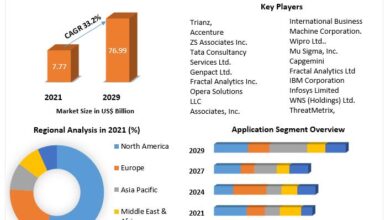The 5 Important Pillars of Data Analytics

Explore the fundamental pillars of data analytics that drive success in today’s data-driven business
In today’s data-driven world, organizations across industries are increasingly relying on data analytics to gain insights, drive strategic decisions, and stay ahead of the competition. However, effective data analytics requires more than just tools and technologies—it requires a solid foundation built upon key pillars that support the entire process. In this article, we’ll explore the five important pillars of data analytics that organizations must prioritize to extract maximum value from their data assets.
Data Collection and Integration:
The first pillar of data analytics is data collection and integration. It involves gathering data from various sources, such as internal databases, third-party systems, sensors, social media, and IoT devices, and integrating it into a unified data repository. This process requires careful consideration of data quality, consistency, and compatibility to ensure that the collected data is accurate, complete, and accessible for analysis.
Effective data collection and integration lay the groundwork for downstream analytics activities, enabling organizations to leverage a comprehensive dataset for insights generation. It also involves implementing robust data governance practices to maintain data integrity, security, and compliance throughout the data lifecycle.
Data Processing and Transformation:
Once data is collected and integrated, the next pillar of data analytics is data processing and transformation. This involves cleansing, formatting, and structuring the raw data to make it suitable for analysis. Data processing may also include enrichment, aggregation, and normalization techniques to enhance the quality and usability of the data.
Data processing and transformation are critical steps in preparing data for analytics, as raw data often contains inconsistencies, errors, and missing values that can skew analysis results. By applying appropriate preprocessing techniques, organizations can ensure that their data is clean, consistent, and ready for meaningful analysis.
Data Analysis and Exploration:
The third pillar of data analytics is data analysis and exploration. This involves applying statistical, mathematical, and machine learning techniques to uncover patterns, trends, and insights hidden within the data. Data analysis techniques may include descriptive analytics, diagnostic analytics, predictive analytics, and prescriptive analytics, depending on the organization’s objectives and use cases.
Data analysis and exploration enable organizations to derive actionable insights from their data, identify opportunities, detect anomalies, and make data-driven decisions. It also involves visualizing data through charts, graphs, and dashboards to communicate findings effectively and facilitate stakeholder understanding and collaboration.
Data Interpretation and Visualization:
Once data is analyzed, the next pillar of data analytics is data interpretation and visualization. This involves interpreting analysis results in the context of business objectives and domain knowledge to extract meaningful insights and actionable recommendations. Data interpretation requires collaboration between data analysts, domain experts, and business stakeholders to ensure that analysis findings are relevant, accurate, and actionable.
Data visualization plays a crucial role in facilitating data interpretation by presenting analysis results in a visually intuitive and easy-to-understand format. Visualization techniques such as charts, graphs, heatmaps, and interactive dashboards help stakeholders identify trends, patterns, and relationships within the data, enabling informed decision-making and strategy formulation.
Data Reporting and Communication:
The final pillar of data analytics is data reporting and communication. This involves documenting analysis findings, insights, and recommendations in comprehensive reports, presentations, or other formats suitable for dissemination to stakeholders. Effective data reporting and communication ensure that analysis results are understood, trusted, and acted upon by decision-makers across the organization.
Data reporting and communication also involve establishing feedback mechanisms to gather input and validation from stakeholders, ensuring that analysis findings align with organizational goals and priorities. It may also include ongoing monitoring and tracking of key performance indicators (KPIs) to measure the impact of data-driven initiatives and guide future decision-making.




